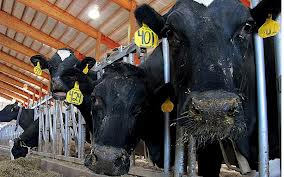Lawmakers have not yet solved the fiscal cliff and now they have to face the dairy cliff. In 2013, the price of milk could double to as much as $6 to $8 per gallon from the current price of $3.75. Congress failed to agree on a new farm bill, which is normally renewed every five years. They need to pass one before the current law expires on January 1.
When this happens, the rules governing dairy price will go back to legislation adopted in 1949. This would force the government to buy milk at higher prices. Once this happens, other market prices would most likely to follow.
The law from 1949 sets a floor for milk prices based on dairy production costs 63 years ago. This was when farms were less efficient than they are today. Add to that the adjustments for inflation and the resulting formula would require Washington to buy milk at twice the present price.
Congress could have averted this by passing a new farm bill that included a minimum price floor. Commodity prices are at near record highs in the past years and the floor has been lower than market prices for milk. Farmers make more by selling their goods on the open market.
The deadlock over the farm bill has been going on for the past six months. The Senate passed a bill that included $23 billion of cost savings for the next 10 years. House’s plan contained $35 billion in savings but the version didn’t come to a vote because members wanted more savings, especially from the food-stamp portion of the bill.
